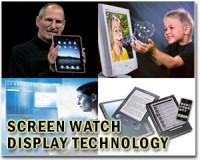 |
Washington (AFP) May 15, 2010 Apple chief executive Steve Jobs personally contacted the editor of a technology blog which obtained an iPhone prototype last month to ask for it back, according to newly released court documents. The contact between Jobs and Gizmodo's Brian Lam and other details of the iPhone saga were revealed in documents unsealed by a California judge on Friday over the objections of the detective who conducted the investigation. Gizmodo published pictures and details of the iPhone prototype after buying it for 5,000 dollars from a 21-year-old man, Brian Hogan, who claimed to have found it in a beer garden where it was lost by an Apple software engineer. The court documents detail Apple's efforts to recover the iPhone prototype, the behind-the-scenes negotiations involving Jobs, the technology visionary behind the iPod, the iPhone and the iPad, and the results of the police probe. No charges have been filed in the case but police raided the home of another Gizmodo editor, Jason Chen, last month, seizing computers and other equipment. The documents also reveal that Hogan, the seller of the iPhone to Gizmodo, was turned in to the authorities by a roommate, Katherine Martinson, who was worried she could be charged in the case because Hogan at one point hooked up the iPhone to her computer. Martinson also described how Hogan showed her a camera box containing 5,000 dollars in 100 dollar bills and told investigators he had tried to interest two other publications, PC World and Engadget, in the iPhone, besides Gizmodo. She told police she and other friends had tried to talk Hogan out of selling the iPhone on the grounds it could ruin the career of Robert "Gray" Powell, the Apple engineer who lost the iPhone while drinking at the Gourmet Haus Staudt in Redwood City, near Apple headquarters, on March 25. "Sucks for him. He lost his phone. Shouldn't have lost his phone," Hogan was quoted as replying. According to the documents, after Jobs requested the return of the iPhone to Apple, Gizmodo editor Lam replied by email that he would give back the device on condition that Apple confirm its authenticity. "I understand the position you're in, and I want to help, but it conflicts with my own responsibilities to give the phone back without any confirmation that it's real, from Apple, officially," Lam said in the email to Jobs. "I want to get this phone back to you ASAP," Lam said. "But I have to get this story of the missing prototype out, and how it was returned to Apple, with some acknowledgment it is Apple's." After receiving a letter confirming Apple's ownership of the phone, Lam said it could be recovered from Chen, the Gizmodo editor who bought it from Hogan and whose home was eventually raided by police searching for evidence. The documents also contain details of an April 20 meeting between police and Apple executives, including an outside attorney for the company, George Riley. "Riley stated the publication of the device and its features is immensely damaging to Apple," Matthew Broad, the detective who led the investigation, said in a statement. Broad said he was told that "people that would have otherwise purchased a currently existing Apple product would wait for the next item to be released, thereby hurting overall sales and negatively effecting Apple's earnings." "Riley stated that he could not provide an estimated loss, but he believed it was 'huge,'" Broad said. Broad's statement also included an account of a telephone conversation he held with Apple's Powell, who told him he spent about two hours in the beer garden with his uncle the night the iPhone was lost and left at closing time. Powell said it was possible that the prototype, which had been disguised to resemble a previous model, the iPhone 3GS, fell out of his bag and on to the floor and that it was possible, but unlikely, that it had been stolen.
Share This Article With Planet Earth
Related Links Space Technology News - Applications and Research
 Adobe fires back at Apple in Flash war
Adobe fires back at Apple in Flash warWashington (AFP) May 13, 2010 Adobe fired back at Apple on Thursday over the refusal by the maker of the iPod, iPhone and iPad to allow the US software giant's widely used Flash video product to run on the devices. Adobe placed advertisements on popular technology websites TechCrunch, Wired and Engadget and ran full-page ads in The Wall Street Journal, The New York Times, The Washington Post and other newspapers to make ... read more |
|
| The content herein, unless otherwise known to be public domain, are Copyright 1995-2010 - SpaceDaily. AFP and UPI Wire Stories are copyright Agence France-Presse and United Press International. ESA Portal Reports are copyright European Space Agency. All NASA sourced material is public domain. Additional copyrights may apply in whole or part to other bona fide parties. Advertising does not imply endorsement,agreement or approval of any opinions, statements or information provided by SpaceDaily on any Web page published or hosted by SpaceDaily. Privacy Statement |